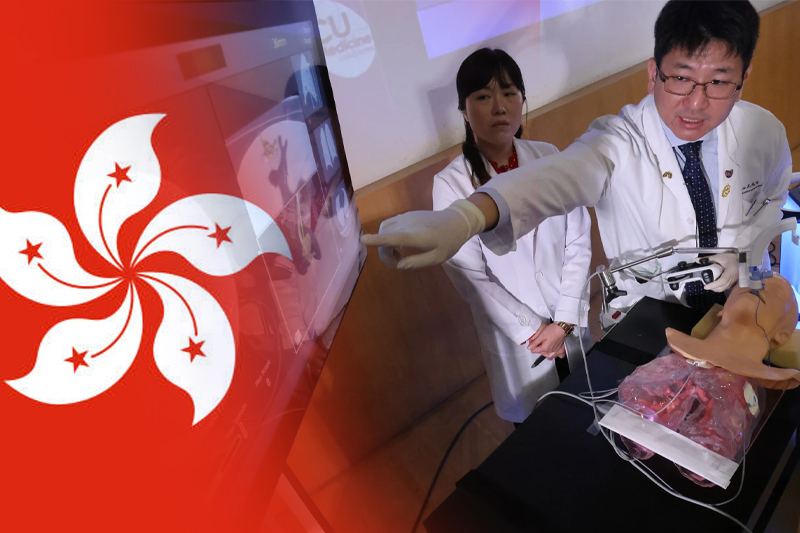
In world’s first, Hong Kong doctors perform cancer surgery using robot and microwaves
Doctors at Chinese University’s teaching hospital have conducted the world’s first surgical procedure using a robot and microwaves to remove tumors that had spread to a cancer patient’s lungs. To date, the procedure has been used on three patients in the city and is expected to help over 100 others locally.
Professor Calvin Ng Sze-hang, who performed the operations at Hong Kong‘s Prince of Wales Hospital in Sha Tin, highlighted the use of a “robotic bronchoscope to go to different lung metastases, [where] we can treat many of them at the same time.”
While a bronchoscope refers to a device used to inspect the inside of a patient’s airways and lungs, the term ‘metastasis’ refers to the proliferation of cancer cells from one part of the body to another, with lungs counted among the most commonly affected areas.
This surgical procedure saw a robotically controlled bronchoscope accessing the airways in the patients’ lungs, where a catheter emitting microwave energy will then be placed. The instrument will eventually destroy the targeted cancer cells.
Keep Reading
The most common method to treat such a condition, according to Ng, involves the surgical removal of the tumour. But the method would subject the patient to blood loss, pain, surgical wounds, and an increased recovery time – amid numerous other possible complications.
The recent medical procedure, on the other hand, does not involve a surgical wound or blood loss. There would also be little or no pain and patients just need a 24-hour hospital stay after this procedure, compared with the minimum of two or three days usually required with the other one.
“[Patients] do not have to worry about the wound being infected or strenuous activity affecting it,” and thus have gone back to their normal life just the day after they get discharged, Ng further mentioned.
Of the three patients the team has successfully worked on since October 2022, one had bone cancer while two had colon cancer.
The procedure is still under clinical trial and can only fight tumours up to the size of 2.5 cm and those away from critical areas such as the heart or major arteries. The team hopes to expand the procedure to cover people with lung cancer as well.
Also Read:- Migrants from the Western Balkans flood German cities during the winter




